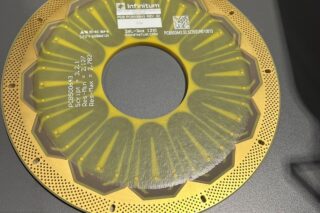The Mitsubishi logo is instantly recognizable: three red diamonds arranged in a triangular formation. At first glance, it’s a simple design. Yet behind this apparent simplicity lies a story that stretches back to 19th-century Japan, blending family heritage, samurai tradition, and ambitious industrial expansion.
Mitsubishi: More Than Just Cars
Today, Mitsubishi is one of Japan’s most prominent conglomerates (keiretsu), known worldwide for its automotive division. Mitsubishi Motors Corporation, part of the Mitsubishi Group, has been a member of the Renault–Nissan–Mitsubishi Alliance since 2016. But the company’s reach extends far beyond the automotive industry.
Founded in the late 1800s by visionary entrepreneur Yataro Iwasaki, Mitsubishi began as a shipping company. Over the decades, the group diversified into multiple sectors, including passenger cars and commercial vehicles, heavy equipment and industrial machinery, shipbuilding and aerospace. Its portfolio also extends to energy and chemicals, electronics and semiconductors and even banking, insurance, and financial services.
This broad portfolio reflects Iwasaki’s original ambition: to create a robust and versatile group capable of enduring across generations. And fittingly, the company’s logo embodies that very vision.
A Samurai Legacy
The name “Mitsubishi” itself combines two Japanese words: mitsu (meaning “three”) and hishi (pronounced bishi), meaning “diamond” or “water chestnut shape.” The literal translation is therefore “three diamonds”, which explains the logo’s bold design of three red rhombuses.
The symbol is directly inspired by the mon, or family crest, of the Tosa clan, which Yataro Iwasaki served and to which his adoptive family belonged. In feudal Japan, mon were heraldic emblems carried by samurai families, representing their lineage, honor, and values.
By adopting this symbol, the Mitsubishi logo draws upon samurai traditions of discipline, loyalty, and resilience. The three diamonds are therefore not just a corporate mark. They echo a centuries-old heritage that shaped Iwasaki’s vision for his company.
Maritime Roots and Industrial Ambition
But the story doesn’t end with the samurai. The three diamonds also reflect Iwasaki’s early ambitions in maritime trade and industrial expansion.
Mitsubishi was originally established as a shipping company, and ships were the backbone of its first commercial ventures. The diamonds, arranged in a strong triangular balance, symbolize the stability, reliability, and robustness required for naval construction and long-distance trade. Diamonds, associated with strength and durability, were thus a fitting metaphor for the company’s ships. And later, for its machinery, vehicles, and industrial products.
The three diamonds can also be interpreted as representing Mitsubishi’s foundational pillars: maritime, commercial, and industrial activities.
In short, by choosing such a powerful yet simple emblem, Iwasaki set the stage for Mitsubishi’s transformation into a symbol of power, trust, and longevity.
An Enduring Industrial Icon
Since its creation in the 19th century, the Mitsubishi logo has remained remarkably consistent. Its minimalist design ensures instant recognition, whether displayed on a ship, a car, or a piece of industrial equipment.
The three red diamonds stand for strength, integrity, and innovation—values that continue to define the Mitsubishi brand. They also serve as a bridge between tradition and modernity: a samurai family crest reimagined as the visual identity of one of Japan’s most influential global corporations.
The Mitsubishi logo is far more than a simple geometric design. It represents a legacy of samurai honor, a foundation in maritime trade, and a vision of industrial diversification that has carried the group into the 21st century.
Read our other “Behind the Logo” stories





![Image [BUYING GUIDE] How to Choose the Right Industrial Robot?](/wp-content/uploads/sites/3/Industrial-Robot-320x213.jpg)

![Image [Buying Guide] How to Choose the Right Safety Shoes?](/wp-content/uploads/sites/3/Safety-Shoes-320x213.jpg)


![Image [Buying Guide] How to Choose the Right AMR?](/wp-content/uploads/sites/3/AMR-320x213.jpg)